by Dr. M | Dec 5, 2018 | Diabetes, Dilation, Education, Exam, Eyeglasses, Floaters, Glasses, Medical Eye Care, News, Office, Patient Care, Retina, Uncategorized, Vision
How does Diabetes affect your eyes?

Diabetics need to see their eye doctor at least once a year.
Diabetes can cause damage to the blood vessels that supply the retina. These damaged blood vessels may leak, swell or bleed causing problems with your vision. Diabetes can also increase the growth of cataracts, and increase your risk of glaucoma. Changes in your blood sugar can cause blurriness in your vision, and fluctuations to your glasses prescription.
What is the best way to keep my eyes healthy?
Annual eye exams are important, because left untreated, diabetic retinopathy can worsen, and lead to blindness. Patients with uncontrolled blood sugar are at a higher risk for problems, but even patients who control their diabetes can develop issues.
Are there warning signs of diabetic eye disease?
Whether you are diabetic or not, if you notice any changes to your vision, you should see your doctor as soon as possible. If you notice a change in prescription, any cloudiness, blind spots or increased floaters in your vision, you should see your eye doctor.
Will controlling my blood sugar help my vision?
Yes. Swings in your blood sugar readings can cause changes to your vision. High blood sugar can cause swelling in the eye, which can affect your vision. If your blood sugar fluctuates, your vision will fluctuate too, and you may find that your glasses don’t work effectively.
Is there a way to treat diabetic retinopathy?
There are different options for treating diabetic retinopathy. Dr. Moran and Dr. Tang can discuss which options are best for your needs. There laser treatments which target the damaged vessels, as well as medications which can help preserve your vision.
If you are Diabetic, Annual Vision Exams are a MUST!
Diabetics have special needs when it comes to taking care of their eyesight. With a dilated exam, your doctor can detect and begin to treat diabetic eye disease before you notice any vision changes. Your annual exam allows our doctors to check for early onset cataracts and glaucoma.
If you (or someone you care about) has diabetes, make sure to connect with the trusted eye care team at Moran Eye Associates.
Call our office to schedule an appointment 610-628-2022.
by Dr. M | Oct 23, 2018 | Cataracts, Cost, Education, Exam, Glaucoma, Mark Moran, Medical Eye Care, Procedure, Surgery
The iStent Inject: This procedure may eliminate the need for daily glaucoma drops!

Size of the iStent Inject
Dr. Mark Moran is now offering Micro-Invasive Glaucoma Surgery (MIGS) with the iStent Inject. This option is currently available for glaucoma patients who are having cataract surgery.
Clinical studies have shown a significant decrease in eye pressure in mild-to-moderate glaucoma with this implant. It is interesting to note that the iStent Inject is the smallest medical device known to be implanted in the human body. The picture to the right shows the actual iStent as a tiny speck on the face of a penny!
An Alternative to Glaucoma Drop Therapy
If using drops to control your glaucoma poses problems for you, this procedure may be a great alternative. Ask yourself if you have these issues with your glaucoma medication:
- Do you have problems putting drops in your eyes?
- Do you forget to use your drops as prescribed?
- Do you have financial concerns with the cost of prescription drops?
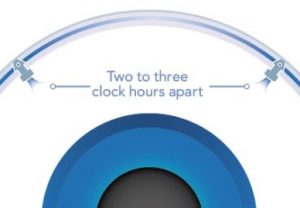
iStent Inject in place
How the iStent works: During cataract surgery, Dr. Moran inserts these tiny stents to create two openings between the front part of the eye and the eye’s natural drainage pathway. This improved flow decreases the pressure in the eye.
Insertion of this FDA approved device is painless. You won’t be able to see or feel these microscopic devices. They are so small that you won’t have to worry about going through an airport metal detector or having an MRI.
This combined cataract/stent procedure does not significantly increase the amount of time that you will spend in the operating room. The recovery time from this procedure is the same as with cataract surgery alone.
Dr. Moran explains the results: “I’ve seen a decrease in pressure in the patients who have had the stents inserted. Many have stopped using their drops altogether. We remind patients that this stent procedure is a treatment, NOT a cure for glaucoma. You still need to follow up with regular appointments to monitor your glaucoma, and maintain the health of your eyes.”
If you have questions about glaucoma, cataracts, or any other vision concern, call to make an appointment at 610-628-2022. Dr. Moran and Dr. Tang would be happy to review your history and discuss if this procedure is right for you.
by Dr. M | Sep 19, 2018 | Dry Eye, Education, Exam, Experience, Glaucoma, Low Vision, Mark Moran, Medical Eye Care, Patient Care, Vision
 The certificate has arrived, so now it is official!
The certificate has arrived, so now it is official!
Bobbi Spain has received her COA designation from the International Joint Commission on Allied Health Personnel in Ophthalmology (JCAPHO). Bobbi is our surgical coordinator, who works with LASIK and cataract patients. She was surprised to see that the package from JCAPHO also included an official COA card, pin and patch!
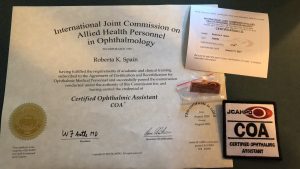
Official Certification
To provide the best care for our patients, the staff at Moran Eye Associates makes learning a priority. Every member of the team takes part in monthly compliance training, as well as taking on additional programs of study in general ophthalmology, low vision, dry eye management, regulations and billing. They also attend industry conferences each year to keep up with advances in technology and and patient care.
In 2017, Mandy, Beth and Dr. Moran attended the American Academy of Ophthalmology (AAO) conference in New Orleans. In April of this year, Bobbi and Cindy accompanied Dr. Moran to the American Society of Cataract and Refractive Surgeons (ASCRS) in Washington, D.C.

Bobbi joins Mandy and Cindy, who already have their COA certificates on display. Mandy received her COA in 2017. Cindy has been a COA since 2004. In order to maintain certification, a total of 18 credits in continuing education must be completed every three years. Eighteen credits is an easy to complete at Moran Eye Associates, where continuing education plays a key role in our success!
by Dr. M | Aug 30, 2018 | Dry Eye, Education, Exam, Floaters, Medical Eye Care, News, Procedure
Dr. Moran leads continuing education session on new technology and treatments.
This past month, Moran Eye Associates held an educational event for local optometrists in the Lehigh Valley. Dr. Moran presented two lectures one on dry eye heat therapy, and the other on laser treatment for floaters. These sessions were approved by the Council on Optometric Practitioner Education (COPE) for continuing education credits for the doctors who attended.

Dr. Moran Presents
During our lecture, the visiting doctors enjoyed a Summer-y spread of barbecue, salad, and snacks while listening to Dr. Moran’s lectures. Everyone in the office pitched in to make this homemade buffet. Beth made her famous barbecue (the secret is bacon!), Dr. Tang provided a chocolate fountain, Cindy brought her mom’s special recipe potato salad, Bobbi made the tossed salad, Mandy made the drinks and decorated the office for the occasion.

A Homemade Buffet Dinner
Back to the topic at hand! Dr. Moran explained the advantages and benefits of the novel treatments we offer in the office: “Dry eye treatment has become more sophisticated as the tools for analyzing tear film have developed. Now that we can image the tear film and the oil producing glands in the eye, we can more accurately diagnose the cause of dry eye. A more accurate diagnosis allows for more effective treatment.”
Heat Therapy for Dry Eye & Laser Floater Treatment now available.
Until recently, doctors had limited options to offer their patients who experienced discomfort from dry eye, or whose vision was obstructed by bothersome floaters. Moran Eye Associates has been successfully implementing these new treatment options for the past six months with great feedback from our patients!
“I feel that I had an extremely positive experience with the laser surgery on both eyes performed by Dr.Moran. I would recommend it highly.” Trudy S.
A Hands-on Opportunity
After the lecture, each optometrist had the opportunity to experience the heat therapy firsthand. They relaxed in our comfortable heat therapy room for 15-minutes, which is the same treatment that we provide our patients.
Our lids are lined with small Meibomian glands that secrete oil, which is an integral component of our tears. The oil prevents our tears from evaporating too quickly. Oftentimes, the glands become clogged, and the lack of oil flow leads to dryness, discomfort, and blurred vision. The focused heat treatment helps to improve the flow of oils. After the treatment, either Dr. Moran or Dr. Tang help to further improve oil flow by manually manipulating the glands.
After a 15-minute heat therapy treatment, they could see (and feel!) how this process improved the quality of their tear film. Dr. Dan Klinger, who practices in Schnecksville, remarked “The treatment was soothing and comfortable. I could feel the difference after just one session.”
The Science Behind Laser Floater Treatment
Dr. Moran showed a video that showed the YAG laser in action as it targeted floaters. This painless treatment uses laser energy to transform the solid floater into a gas bubble, which then dissolves on its own. Moran Eye Associates is one of a few practices in the area that offers this unique in-office treatment.
Educating patients and professionals is key to offering the best care to our patients. If you have any questions about Heat Therapy Treatment or Laser Floater Treatment , contact our office for more information or to schedule an appointment.
by Dr. M | Jul 25, 2018 | Cataracts, Diabetes, Dilation, Exam, Experience, Eyeglasses, Glasses, LASIK, Macula, Mark Moran, Medical Eye Care, Patient Care, Retina
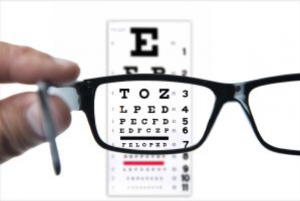
Are you Seeing your Best?
How Vision is Measured
The distance vision of a normal human eye is defined at 20/20. This number illustrates what a person with normal vision can see at twenty feet. Your visual acuity is measured on how it relates to vision at 20 feet.
- If your vision is 20/40, you can see at 20 feet, what a normal eye can see at 40 feet.
- If your vision is 20/100, you can see at 20 feet, what a normal eye can see at 100 feet.
- If your vision is 20/400, you can see at 20 feet, what a normal eye can see at 400 feet.
When you read an eye chart, chances are that person testing you is paying attention to what you say, as well as how you say it. They will know if you are seeing clearly or are struggling and making guesses. It never pays to cheat on your eye test!

Driving requirements
How well do I need to see to drive?
Although each state determines their specific requirements, generally 20/40 vision is needed to pass the driving test. If you need glasses to see 20/40, it will be indicated on your driver’s license. While your distance vision is key to passing the driving test, there are other factors that are considered as well. For complete information on what is required in Pennsylvania, click on the link.
Pennsylvania Drivers Visual Standards
After vision correction surgery, like LASIK or cataract surgery, you may be able to see well enough to have the vision correction restriction removed from your license.
What is legally blind?
If you cannot see any letters below the 20/200 line, even when wearing glasses or contacts, you are considered legally blind. If your vision can be corrected by putting on a pair of glasses, you may have poor vision, but you are not legally blind.

I see 20/20, do I need an eye exam?
Absolutely! Measuring your vision is an important part of your comprehensive exam, but there is so much more that we check at your visit. We will check your pupils, eye pressure and field of vision. We will record your visual history, health history and medications. The doctor will examine the health of your eyes using a slit lamp microscope, checking for eye disease, including glaucoma, macular degeneration, diabetic retinopathy and cataracts.
Early detection of eye disease is your best defense against vision loss. So even if you don’t need a new pair of glasses, make sure to schedule your regular check-up, so you can keep seeing your best!
by Dr. M | Jun 7, 2018 | Education, Eye Protection, Eye Safety, Fun Stuff, Glasses, Medical Eye Care, Uncategorized
Dr. Tang Teaches About Eye Care
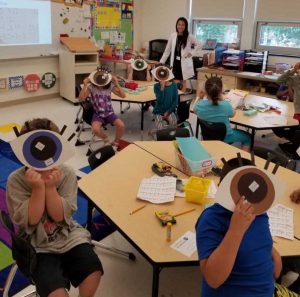
Students at Paxinosa Elementary School in Easton are all eyes!
On Tuesday, June 5th, Dr. Bianca Tang brought eye education to 1st grade classrooms at Harry S. Truman Elementary School in the Salisbury School District, and Paxinosa Elementary School in the Easton Area School District. Her visits were part of Moran Eye Associates commitment to community outreach.

Dr. Tang contacted local school nurses and offered to teach the children about eye care, to help the children feel more comfortable about visiting the eye doctor. She explained the importance of taking care of your eyes and wearing eye protection. She talked to them about what to expect at an eye exam, and showed them the tools that the eye doctor uses to check their vision. They talked about how important it is to visit the eye doctor even if you don’t need glasses.
Not surprisingly, all of the 1st graders knew what pink eye was!
The children were excited to learn about how the eyes work. Dr. Tang explained that your eyes can play tricks on you, and played some games with optical illusions. The students did a great job identifying the eyes of different animals…

fish, birds, horses, goats and reptiles…and seeing the differences between each one.
Then it was time to get out the glue sticks! Each student made a craft which helped them to identify the parts of the eye. They quickly learned that the color part of the eye is IRIS, and the black center part is the PUPIL. They finished off their project with beautiful eyelashes!
At the end of the 30-minute presentation, the children enthusiastically answered questions about what they learned. We aren’t sure who had more fun, the children or our staff!
Next stop on the education tour is Lincoln Elementary in Emmaus, and Jaindl Elementary in the Parkland School District, next week.
If your child’s school would be interested in an eye care program for any grade, please don’t hesitate to contact our office at 610-628-2022.

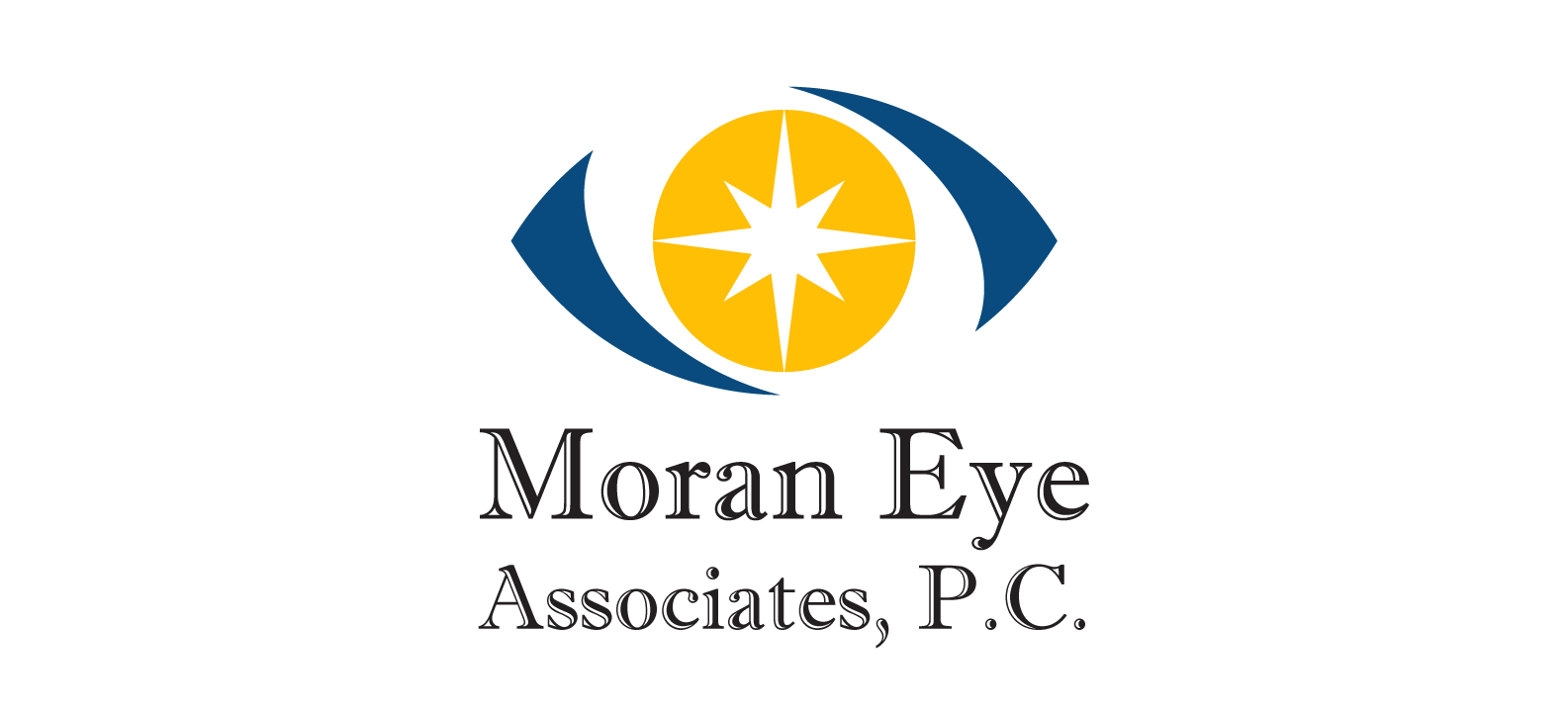


 The certificate has arrived, so now it is official!
The certificate has arrived, so now it is official!









